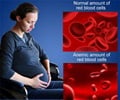A recent study finds that smoking during pregnancy can lead to asthma in grandchildren.

Wondering if this dangerous heritage might extend even farther down the family line, Virender K. Rehan and his colleagues at Los Angeles Biomedical Research Institute at Harbor-UCLA Medical Center (LA BioMed) exposed pregnant rats to nicotine.
They then tested an additional generation-the mothers' great-grand-rats-for signs of asthma.
Their results suggest that this group of rats is also at an increased risk of this condition, bearing the brunt of nicotine exposure three generations in the past.
The study is published in the American Journal of Physiology-Lung Cellular and Molecular Physiology, published by the American Physiological Society.
Source-ANI
 MEDINDIA
MEDINDIA


 Email
Email










